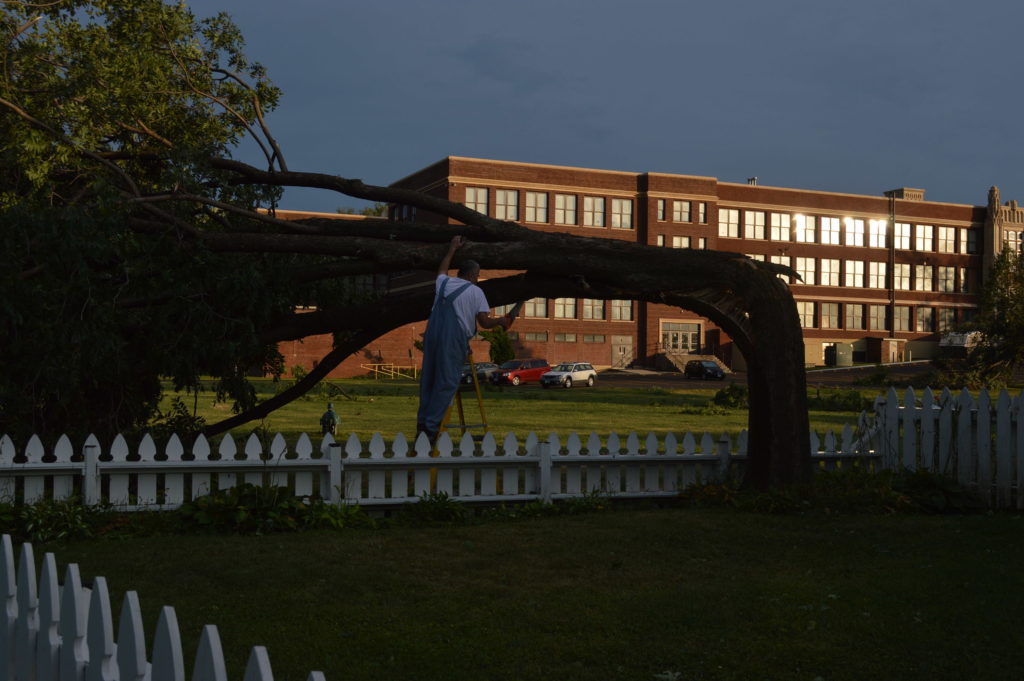
A tree near Franklin Middle School was bent in half Aug. 10, 2020, during the devastating derecho windstorm in Cedar Rapids, Iowa. (photo/Cindy Hadish)
(NOTE: Story/photos will be updated as electricity/Internet become available)
UPDATED: 6:30 p.m. Aug. 14, with more photos; comments from Stacey Walker
Dutch elm disease and invasive pests such as emerald ash borer change landscapes over time, but the Aug. 10, 2020, derecho windstorm that swept through Iowa with hurricane-force winds dramatically altered many parts of the state in one fell swoop.
The midday straightline winds – derecho is Spanish for “straight” – left hundreds of thousands of businesses and homes without power, flattened an estimated 10 million acres of the state’s corn and soybean crops and, tragically, killed three people: a Solon cyclist hit by a tree branch while riding on a trail; a Malcom woman when a tree hit her porch and an electrician electrocuted in Brooklyn, Iowa.
Roofs were torn off by the wind or punctured by tree limbs and cars were crushed by trees. One Cedar Rapids man’s roof was damaged when his neighbor’s trampoline sailed over his house.
Already struggling against the effects of the coronavirus pandemic, Iowa will face weeks, if not months and years, of recovery from the storm that packed winds of more than 100 mph. In Cedar Rapids, the derecho raged for an hour before residents peeked outside at the damage left in its wake.
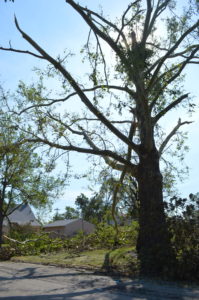
Many trees were left with major damage in the wake of the storm in Cedar Rapids, Iowa. (photo/Cindy Hadish)
The storm proved to be a ruthless equalizer, with trees young and old of every variety brutalized across the board. Oaks, lindens, maple, Sycamore, pines and others were completely uprooted, cracked in two like a pencil or their tops oddly twisted from the destructive force of the wind.
Familiar neighborhoods became unrecognizable and streets unnavigable, with snowplows even used to clear lanes for traffic. Eerie silence that followed the storm was punctuated by regular sounds of ambulance and firetruck sirens wailing, and in subsequent hours, by the incessant buzz of chainsaws and the loud hum of generators.
Stately pine trees that stood sentry for generations at the entrance of Franklin Middle School in northeast Cedar Rapids were uprooted, and trees at the historic Brucemore estate just blocks away also sustained damage.
Some residents described their neighborhoods as looking like a war zone, while in many places, the storm spared neither the living nor the dead, as headstones and trees toppled in final resting places, including the historic Oak Hill Cemetery in southeast Cedar Rapids.
A tangle of power lines and tree branches translated into numerous days without electricity for most of Cedar Rapids, Marion and other towns, leading to long lines at the rare convenience stores that opened to sell gasoline.
Note: The Greater Cedar Rapids Community Foundation created a disaster fund for derecho recovery. If you can help, please donate at: www.gcrcf.org
The storm tore the roof off the Glovik Parish Center at St. Wenceslaus Catholic Church, built for the former school in 1926; toppled the brick addition to the 1900-built Czech School building and ripped through the remaining stone building of the Sinclair meatpacking plant – all in southeast Cedar Rapids – and blew out nearly floor-to-ceiling windows at Cafe St. Pio across the Cedar River in Czech Village. Cafe owner Brad Danielson said he and a few customers and staff rode out the storm in the vault of the former bank building.
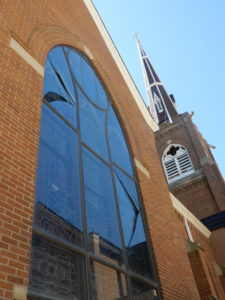
A protective window at St. Wenceslaus Church in Cedar Rapids was shattered, but the stained glass window appeared undamaged. (photo/Cindy Hadish)
In Toledo, workers cleaned up roof damage to the Tama County Courthouse, where chimneys toppled, but the structure survived, and other buildings in the central Iowa town appeared torn in two. Nearby in Chelsea, the City Hall/Library building’s roof sustained damage, with volunteers moving the entire library’s books to St. Joseph’s School.
Some rural areas sustained not only power outages, with phone service down, but lack of running water, as well.
Progress was exceedingly slow in Cedar Rapids, where the majority of the city was still without electricity and communication was difficult, even five days later. Unlike previous disasters, when the National Guard was almost immediately called out to assist, it seemed that the city was left on its own.
During an interview Friday, Aug. 14, with NPR, Linn County Supervisor Stacey Walker questioned the lack of state and federal response.
“It’s utter devastation here,” he said, comparing the storm to a “land” hurricane and citing a spike in COVID-19 cases in Linn County. “It’s a crisis within a crisis.”
Earlier in the day during an appearance in Cedar Rapids, Iowa Gov. Kim Reynolds said the application for a federal disaster declaration wouldn’t be made until Monday; one week after the storm.
In the meantime, residents without power face medical challenges, food shortages and extreme heat.
“Things are pretty dire on the ground,” Walker said.
For core areas of Cedar Rapids in particular, the storm was a flashback to the devastating 2008 flood, with the unforgettable stench of floodwaters mercifully, but sadly, replaced by the sweet scent of freshly cut wood, and tree limbs, rather than household possessions, lining curbsides for collection, with some piled more than 7 feet high.
City leaders called the storm the most devastating natural disaster in Cedar Rapids history; incredibly even surpassing 2008, which affected 14 square miles of the city. This time, all 75 miles of Cedar Rapids sustained damage of some sort, and just as last time, with a long road left to recovery.
Learn what suggestions Trees Forever offers for native trees to plant in the Midwest.
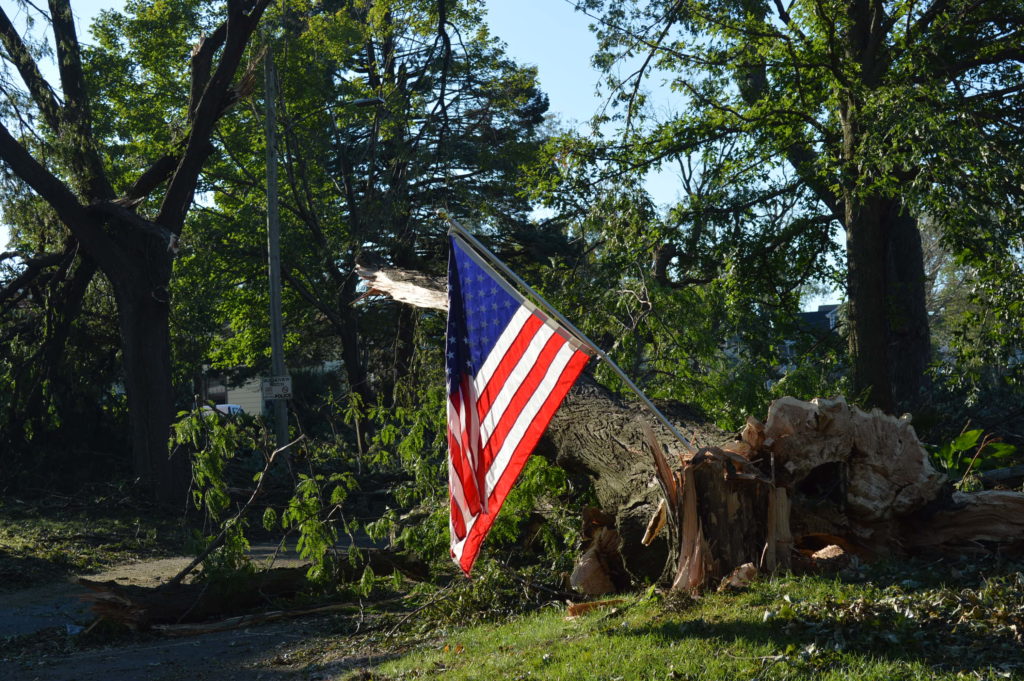
A resident of Longwood Drive in northeast Cedar Rapids, placed an American flag in the remains of an uprooted tree following the Aug. 10, 2020 derecho windstorm. (photo/Cindy Hadish)
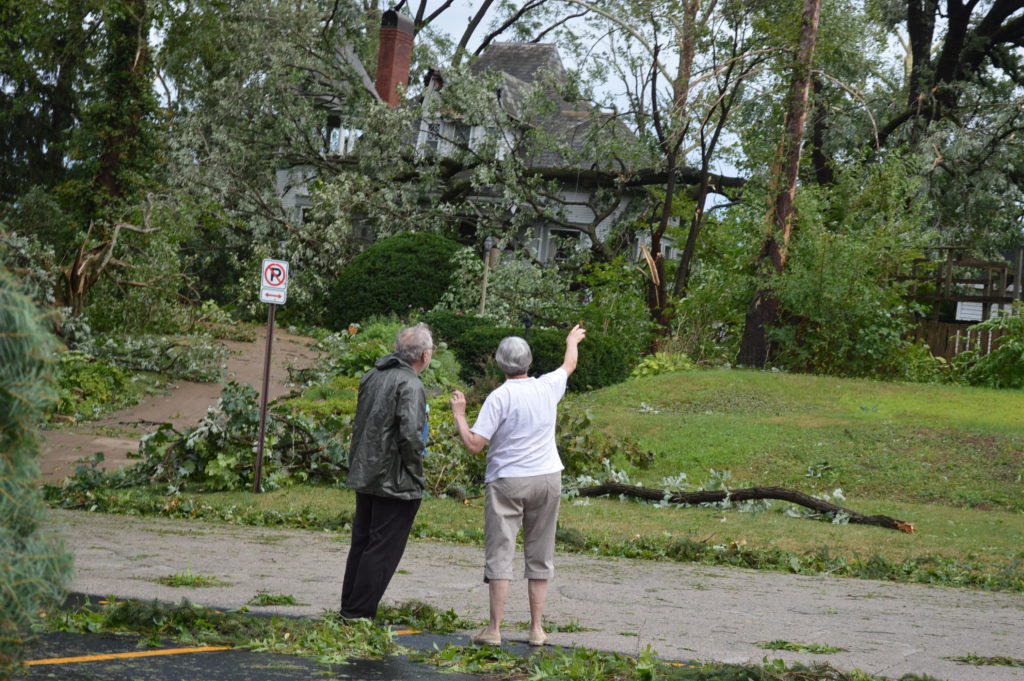
The owner of a historic home on B Avenue NE in Cedar Rapids points out storm damage to a neighbor. (photo/Cindy Hadish)
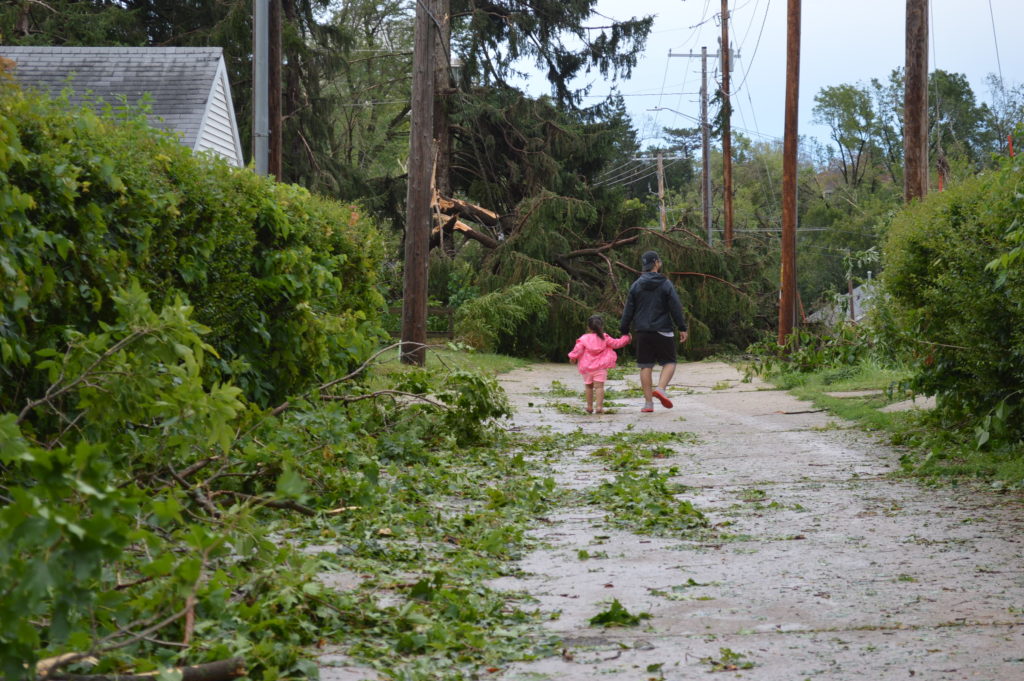
A father and daughter walk through an alley in northeast Cedar Rapids immediately after the Aug. 10, 2020 storm. (photo/Cindy Hadish)
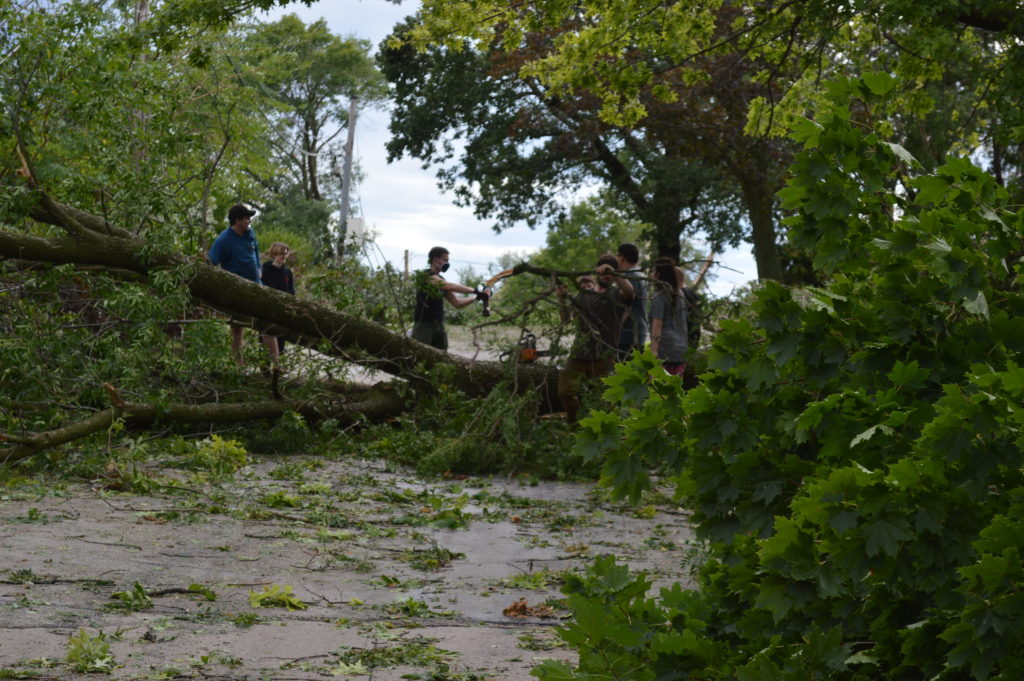
Neighbors join together in northeast Cedar Rapids to clear tree debris from a street. (photo/Cindy Hadish)
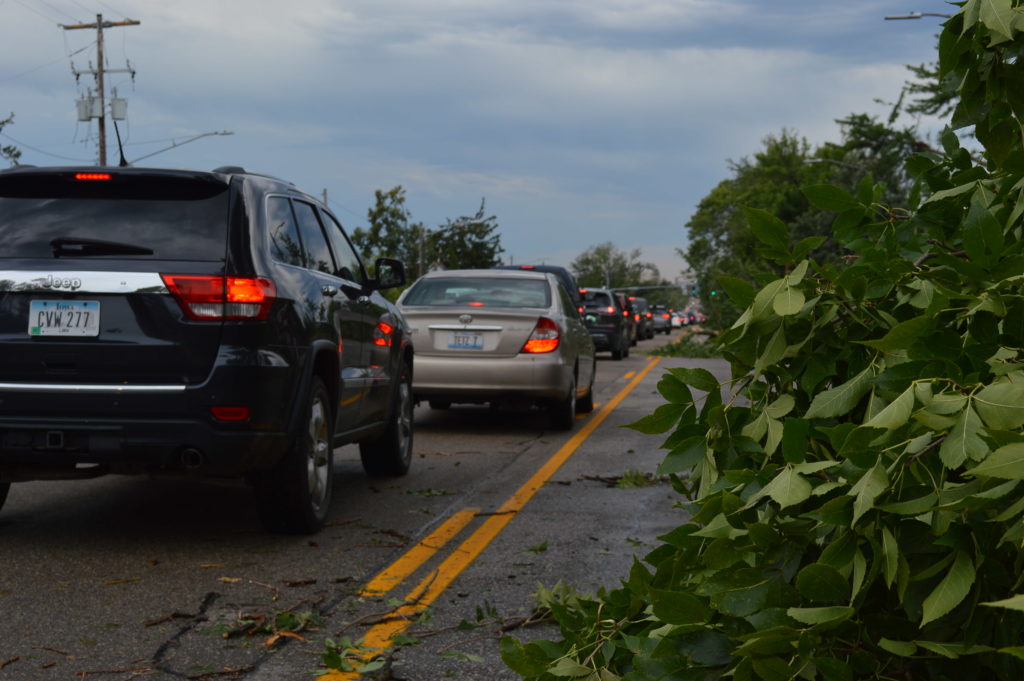
Traffic flows through the center lane on First Avenue in Cedar Rapids to avoid trees in other lanes following the derecho. (photo/Cindy Hadish)
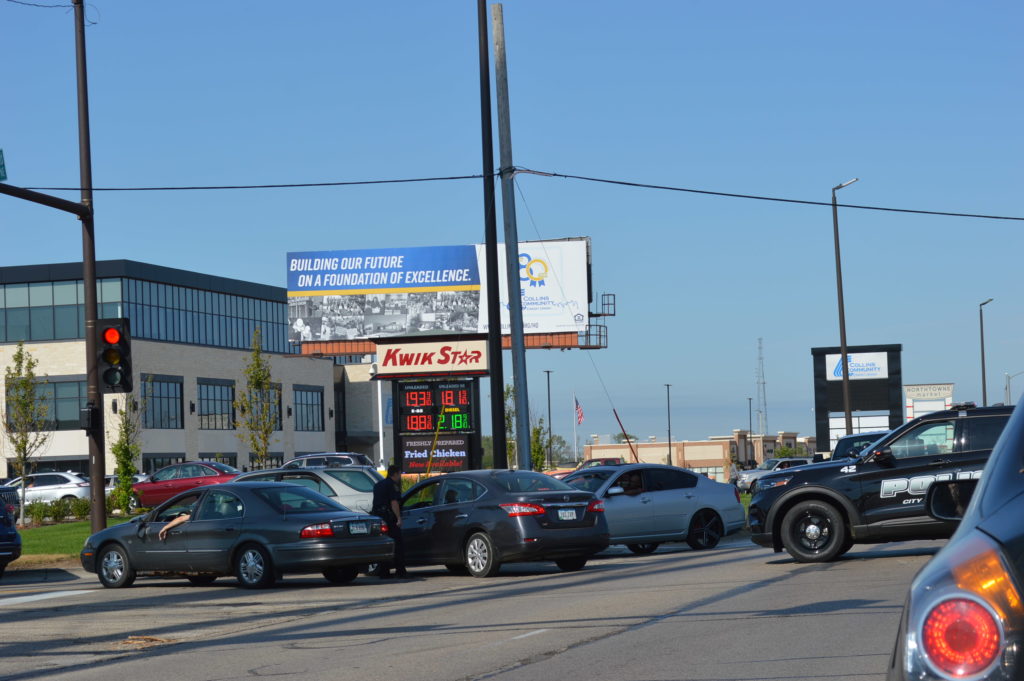
A police officer controls traffic as motorists line up for gas on Blairs Ferry Road NE. (photo/Cindy Hadish)
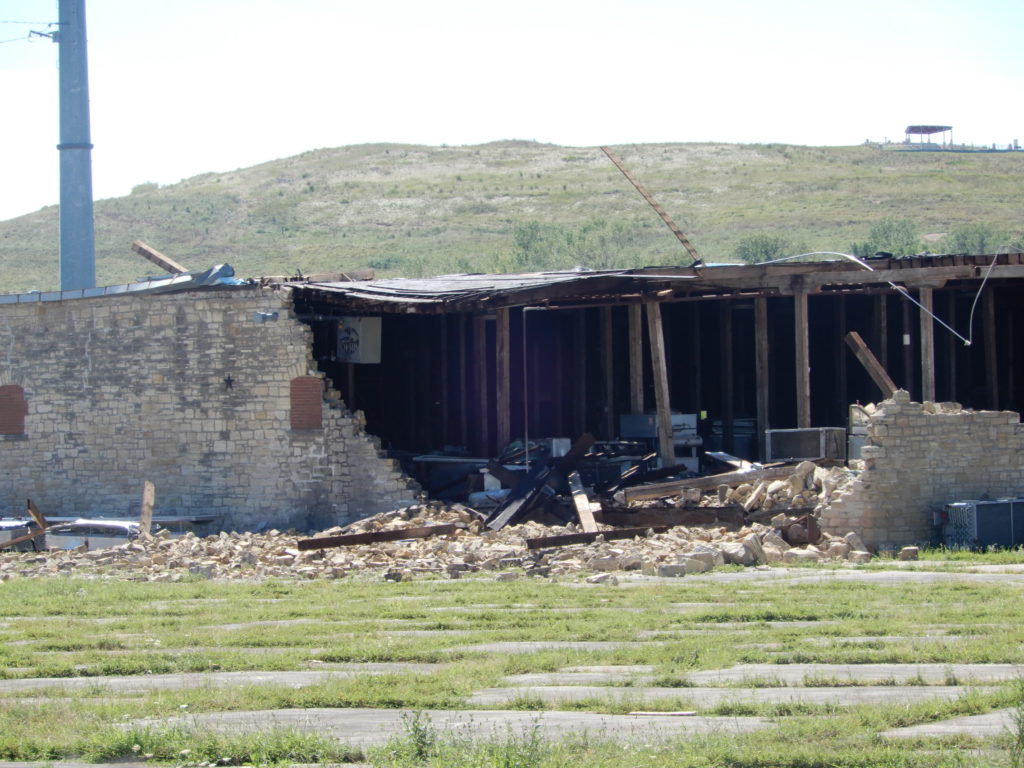
The last remaining building on the Sinclair complex in southeast Cedar Rapids sustained heavy damage. (photo/Cindy Hadish)
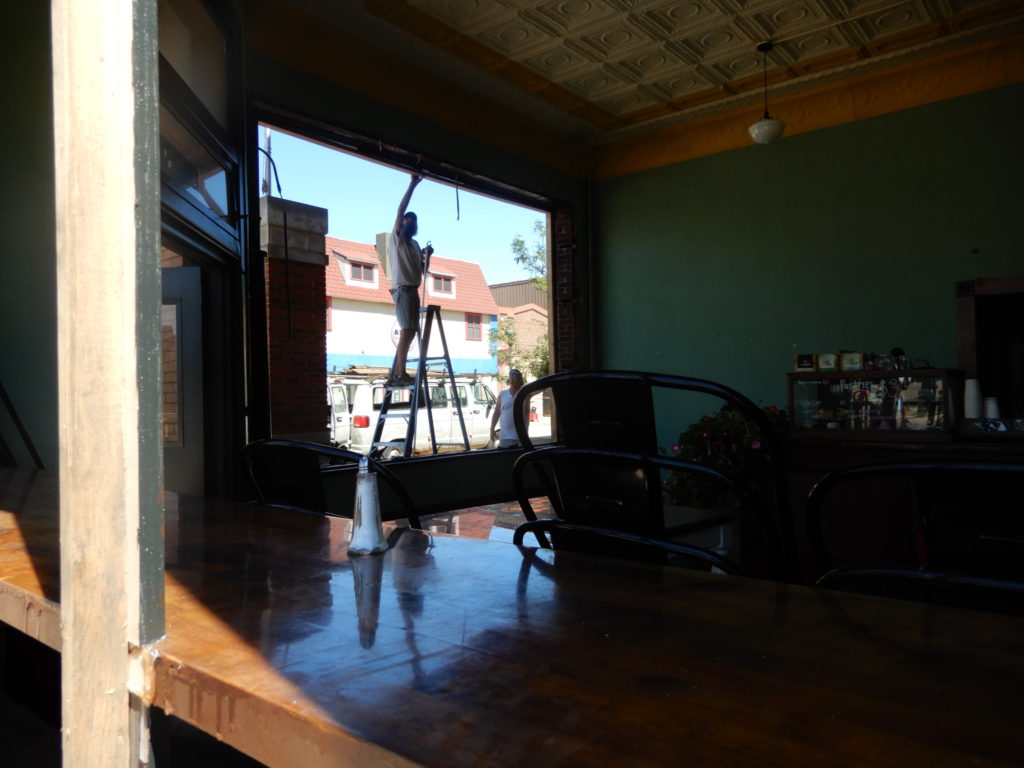
“The cowboys” work to repair one of the windows blown out at Cafe St. Pio in Czech Village. (photo/Cindy Hadish)
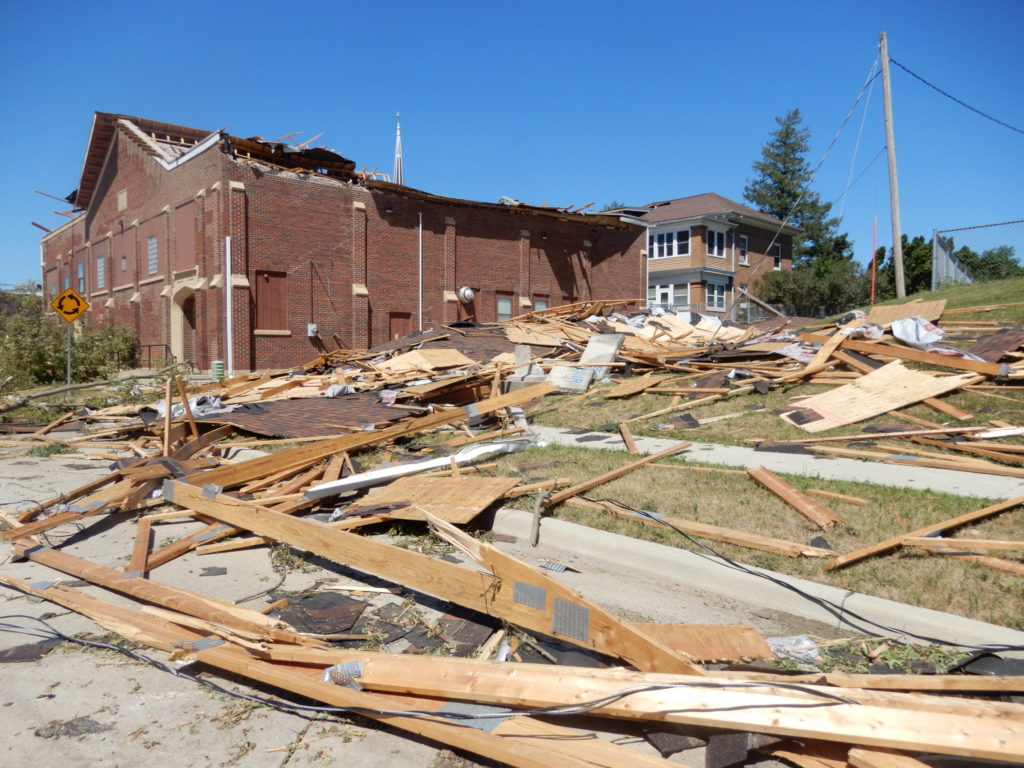
The roof of the Glovik Parish Center of St. Wenceslaus Church was blown off in the storm. (photo/Cindy Hadish)
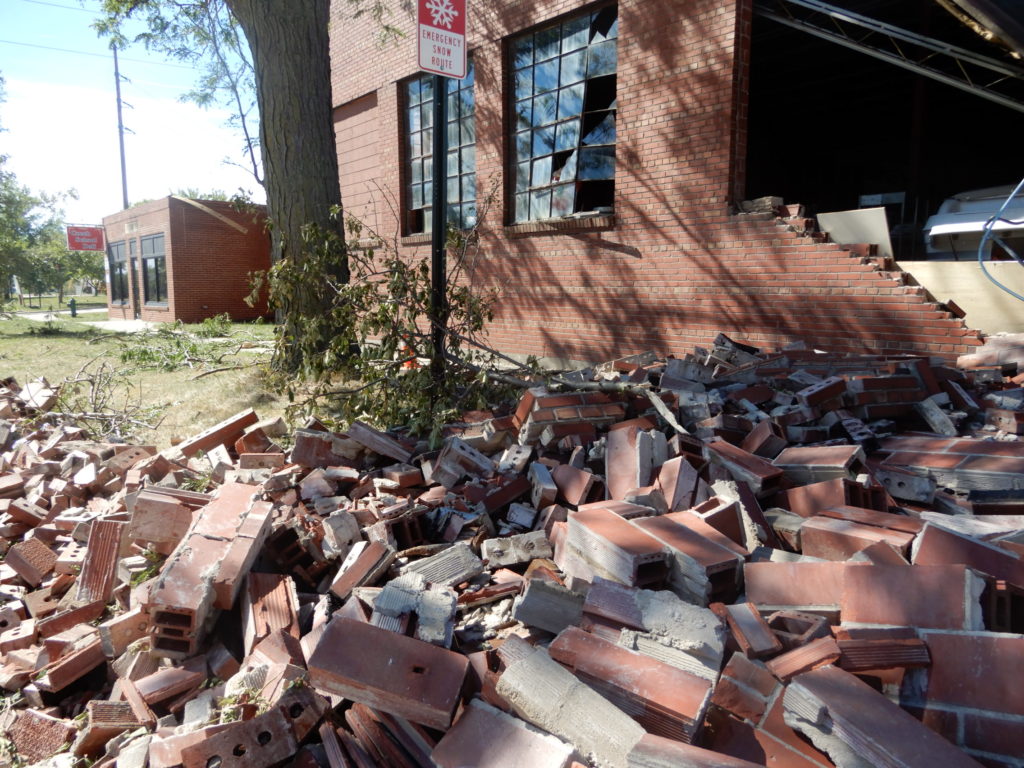
Bricks litter the sidewalk around the addition to the 1900-built Czech School in Cedar Rapids, now home to Winifred’s Catering. (photo/Cindy Hadish)
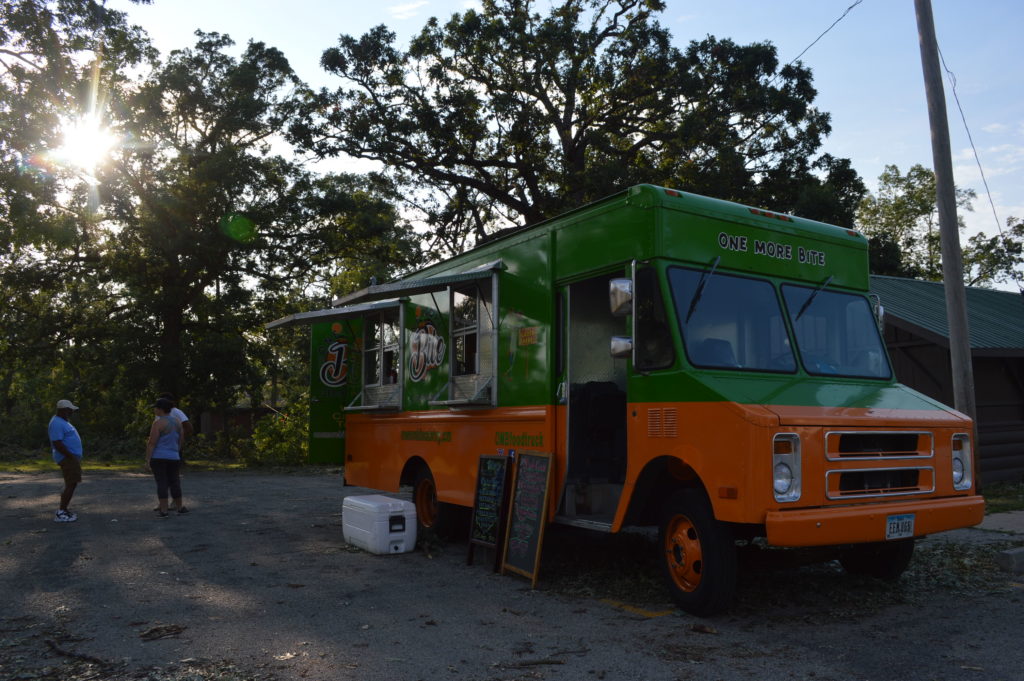
Shout-out to the awesome food truck set up at Bever Park in Cedar Rapids for residents who have no way to cook their food. (photo/Cindy Hadish)
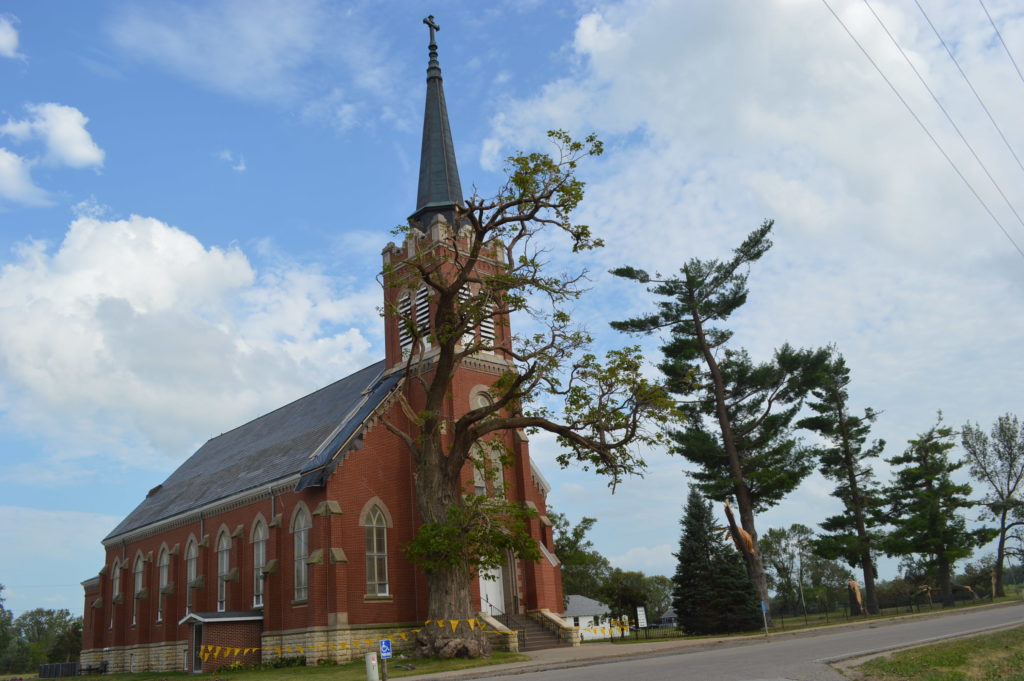
St. Joseph’s Church in Chelsea, Iowa, appeared to have sustained minor damage, while nearby trees were decimated by the storm. (photo/Cindy Hadish)
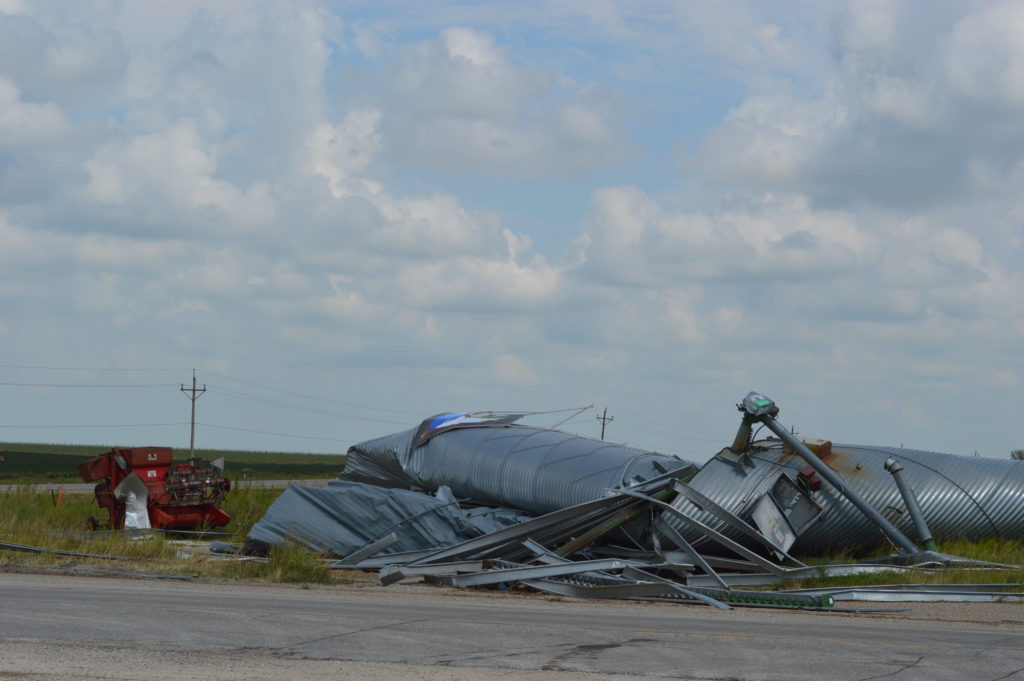
A landmark silo on Highway 30 that marked the turnoff to Belle Plaine, Iowa, toppled during the storm. (photo/Cindy Hadish)
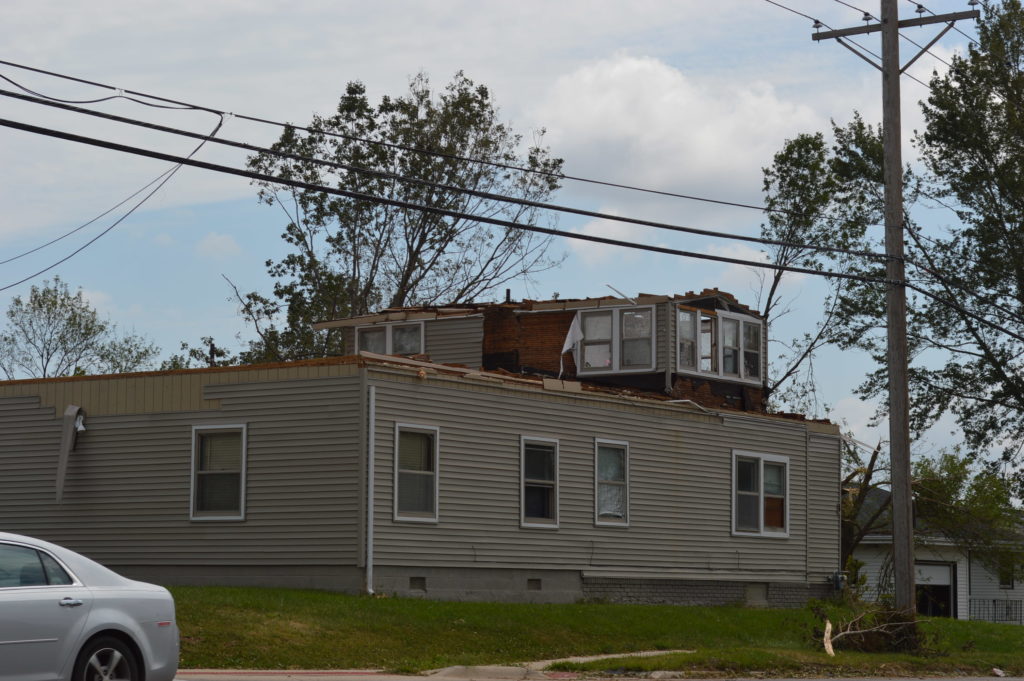
Portions of a house on Edgewood Road NW were ripped off by the derecho windstorm. (photo/Cindy Hadish)

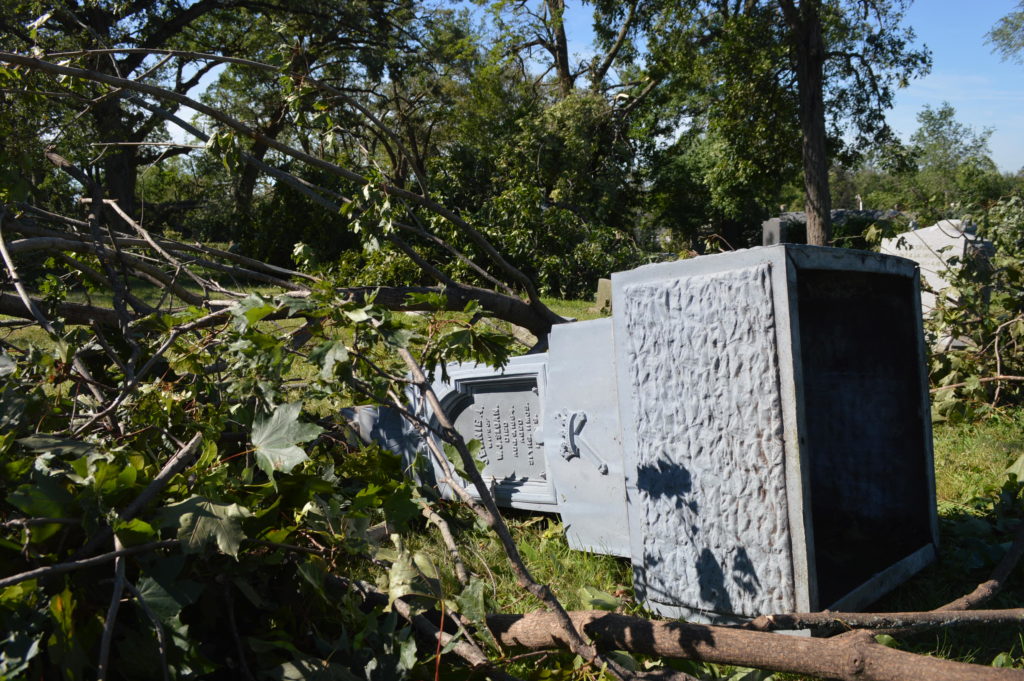
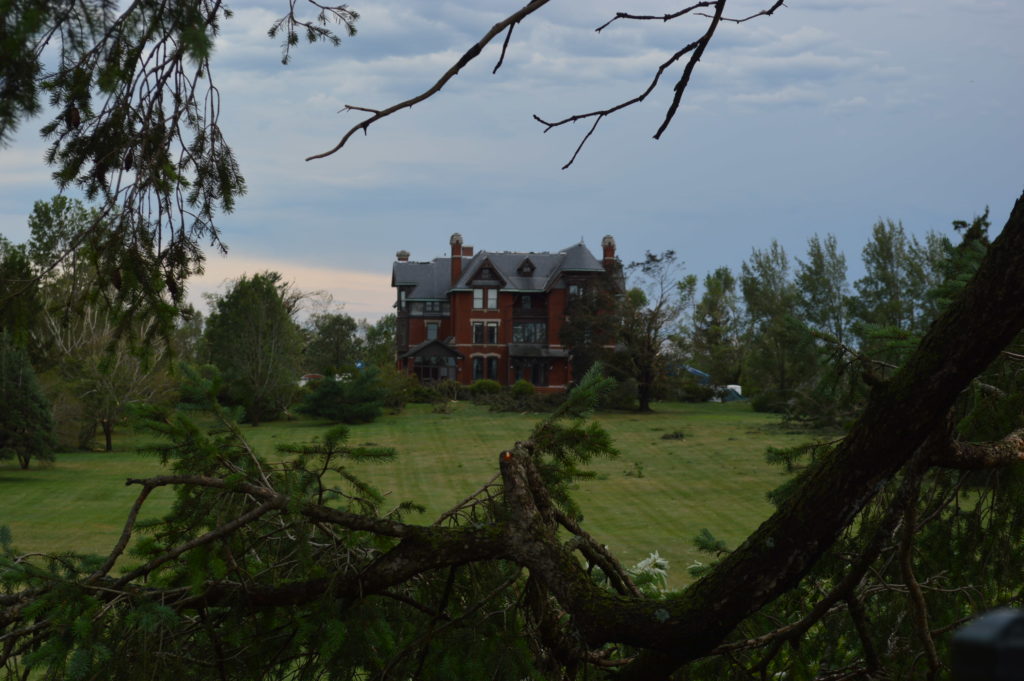
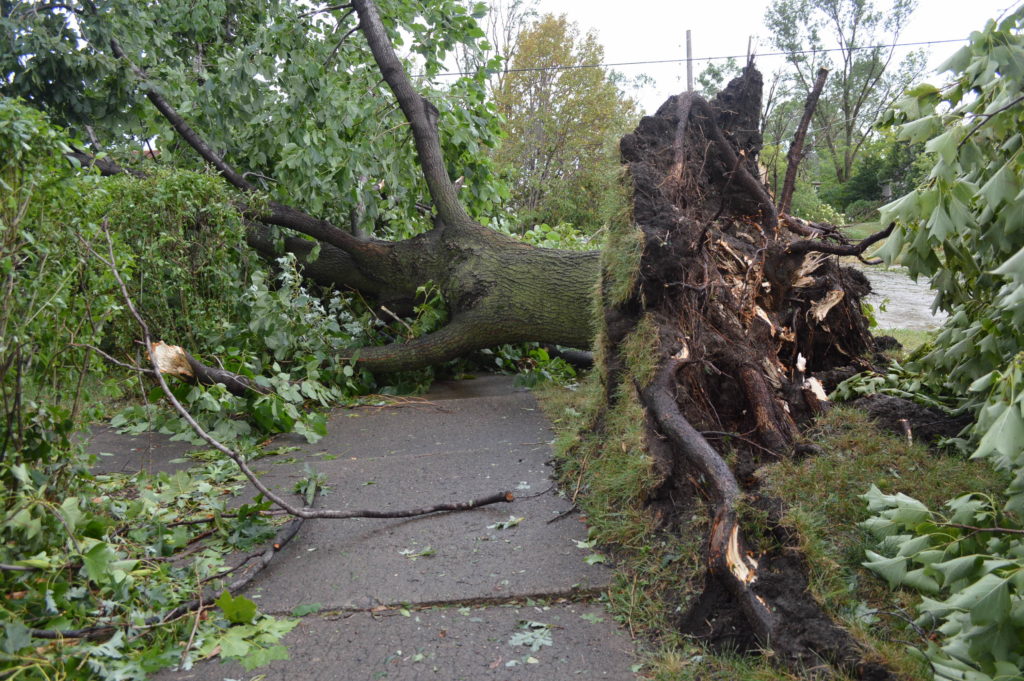
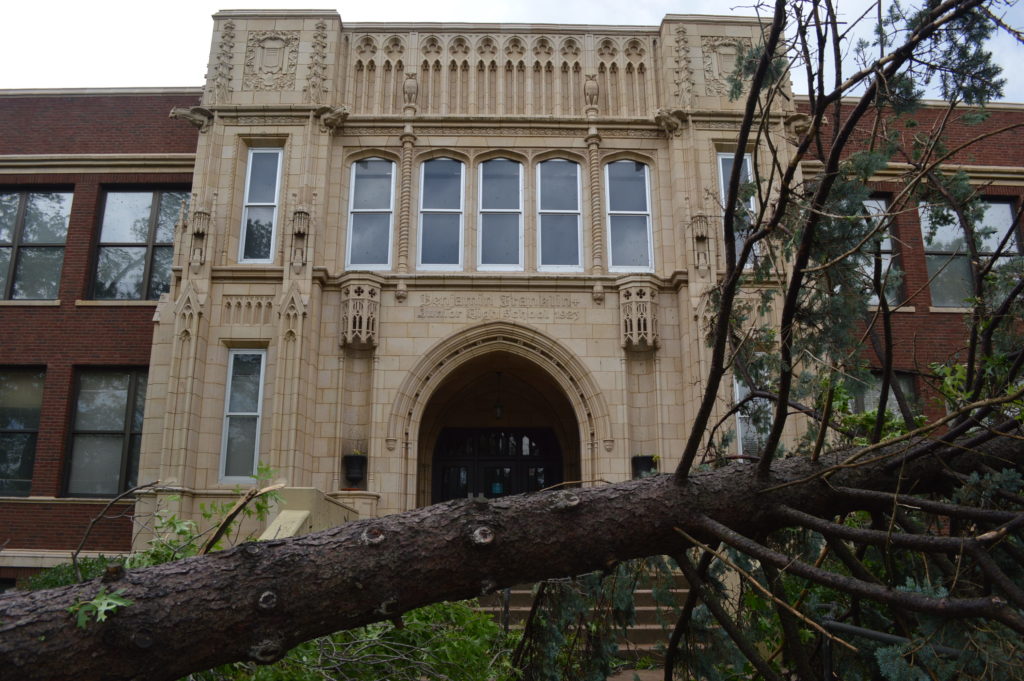
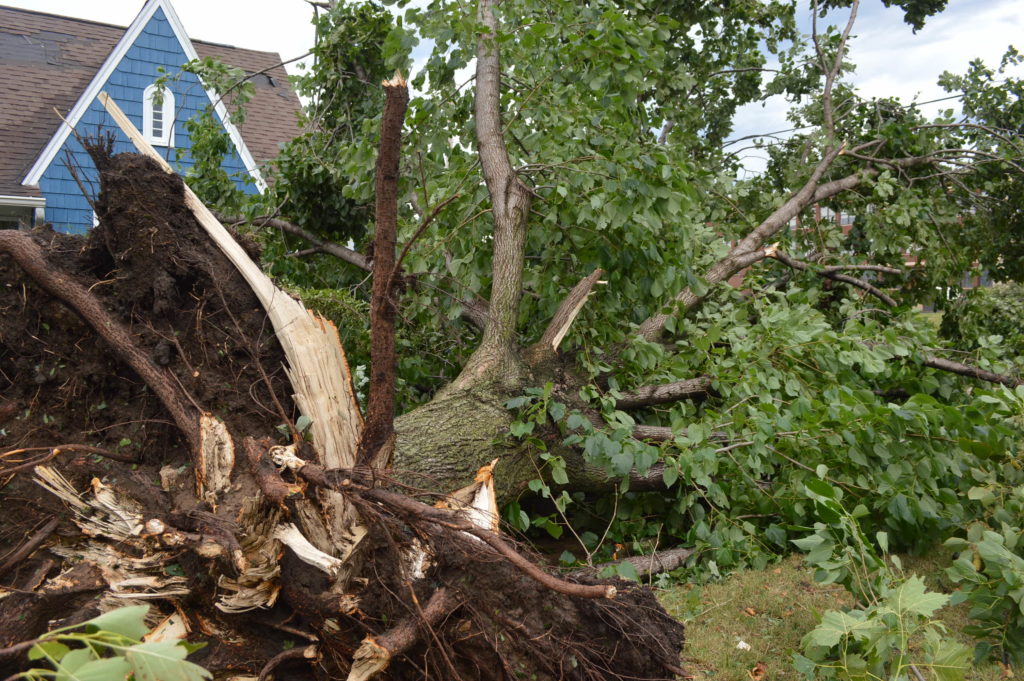
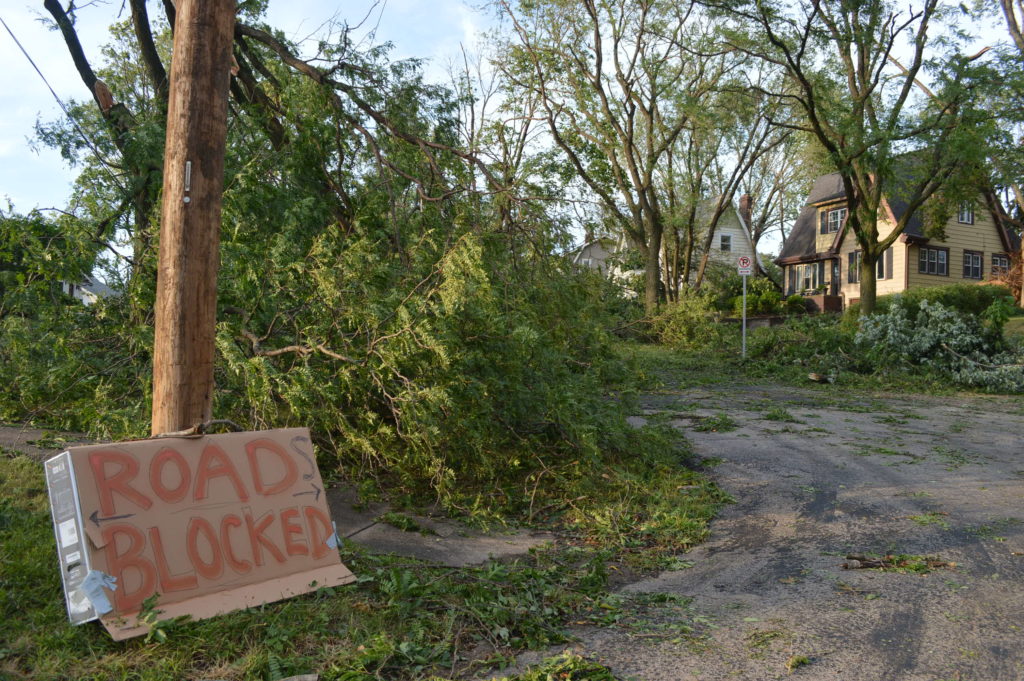
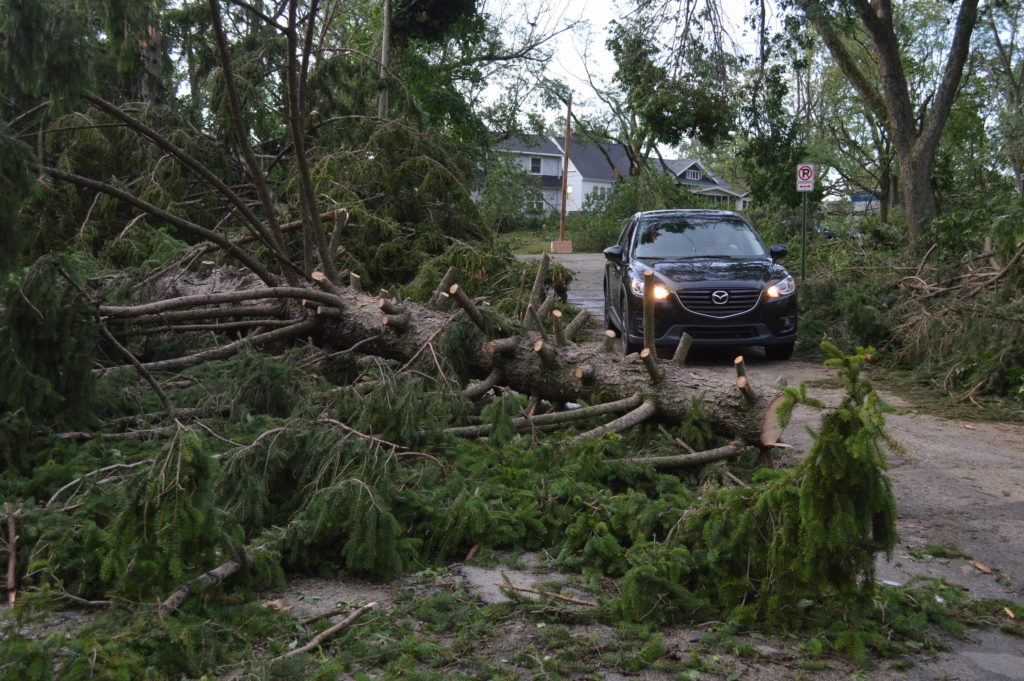
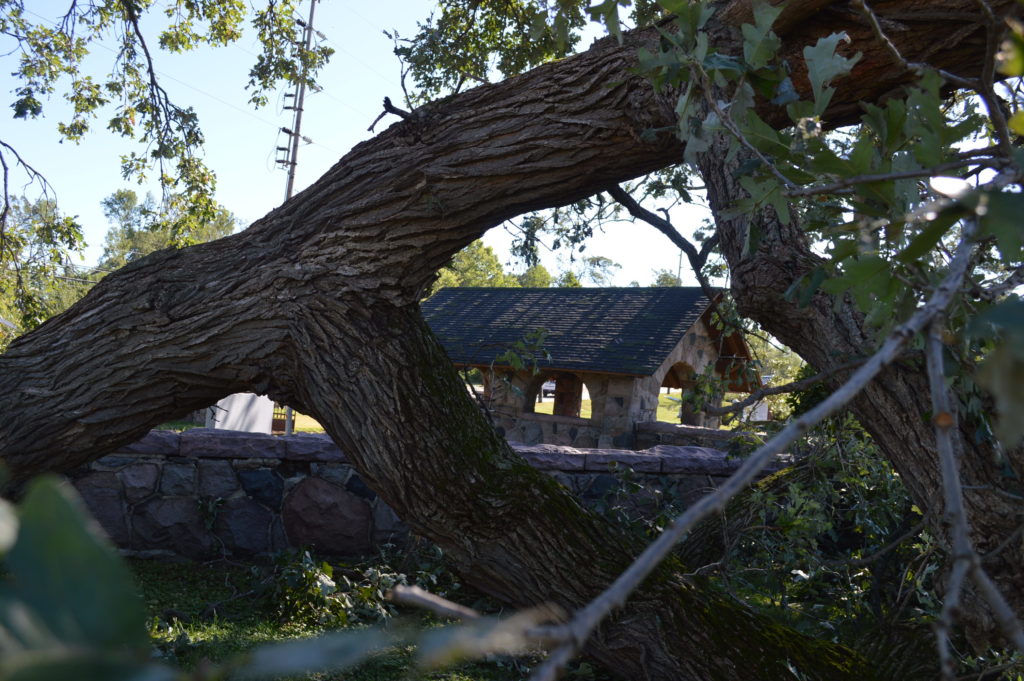
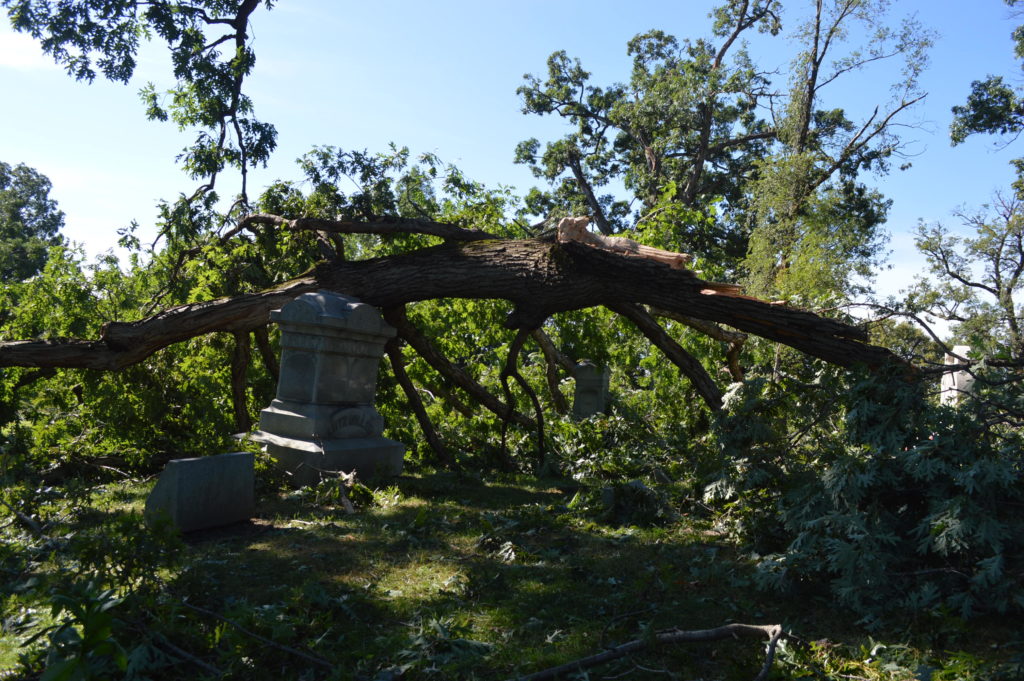
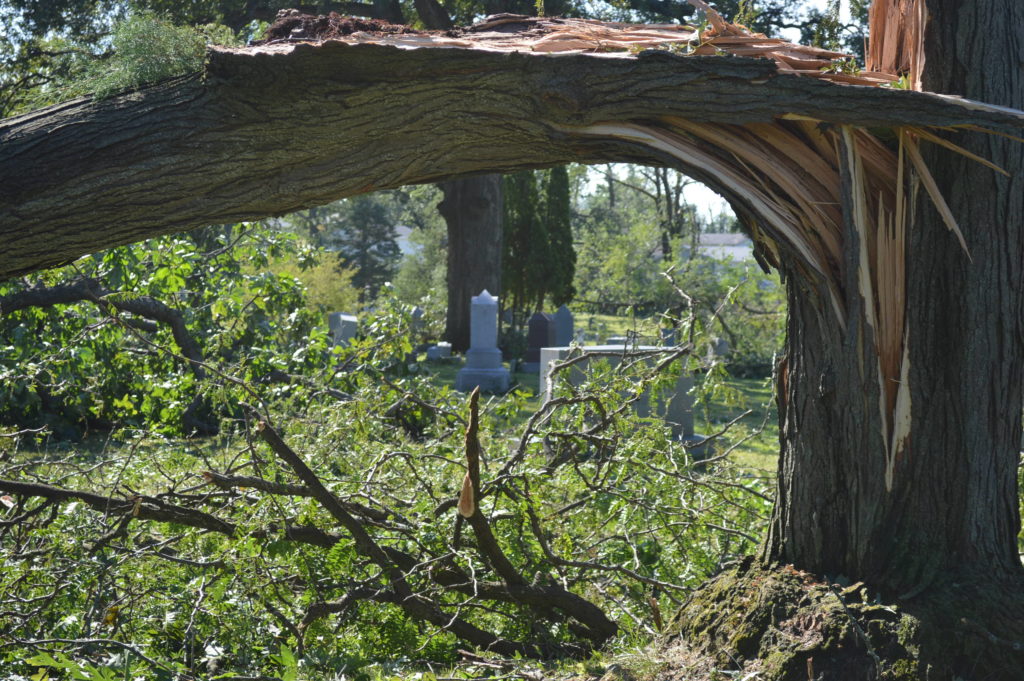
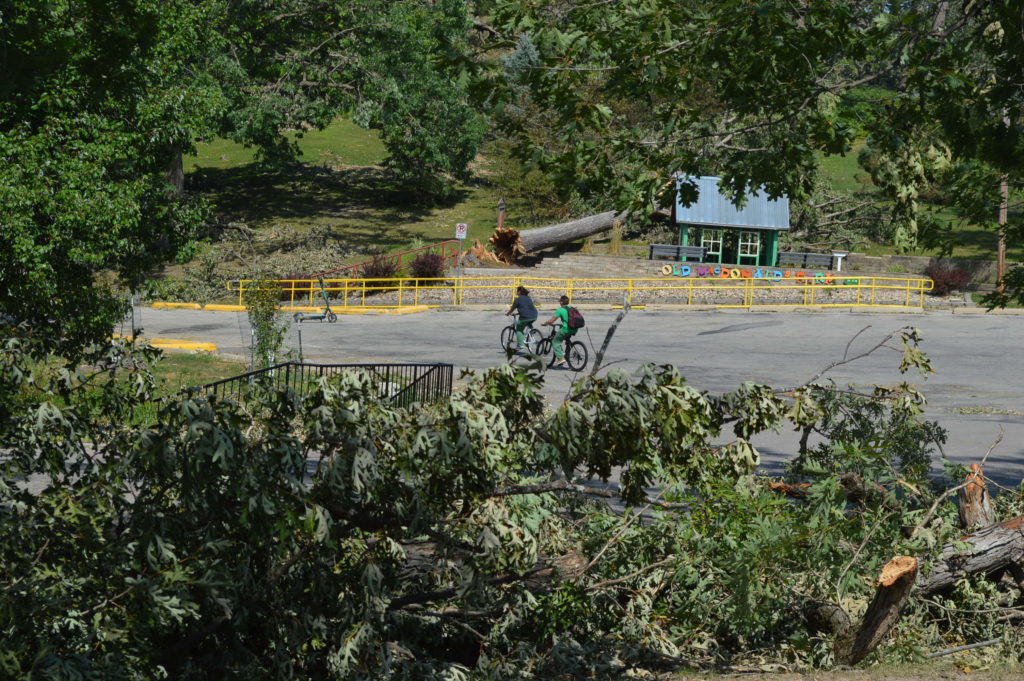
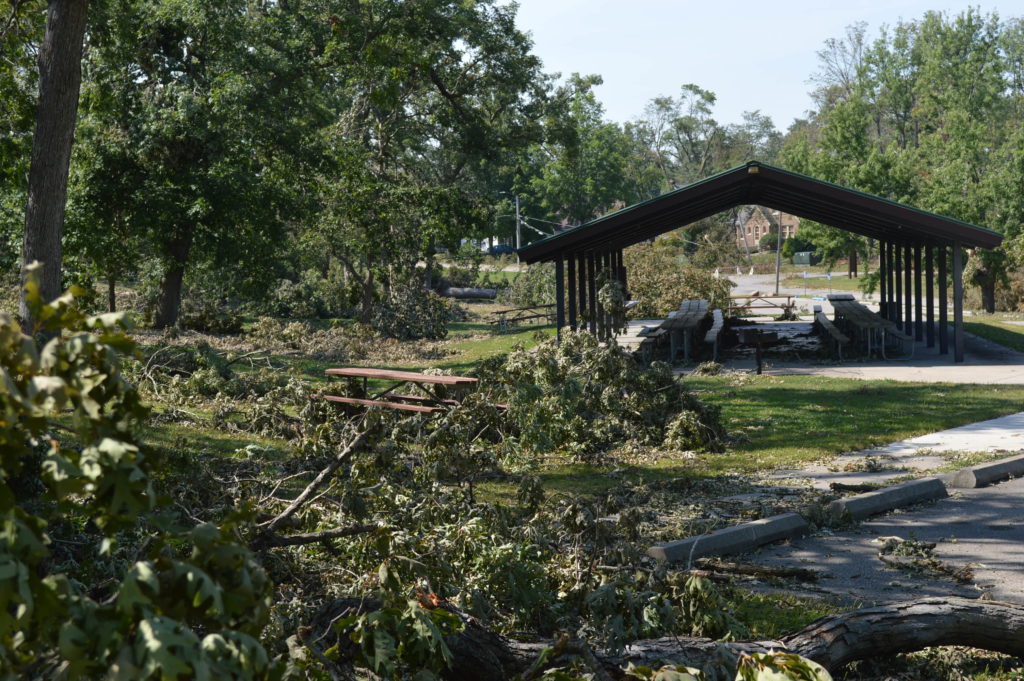
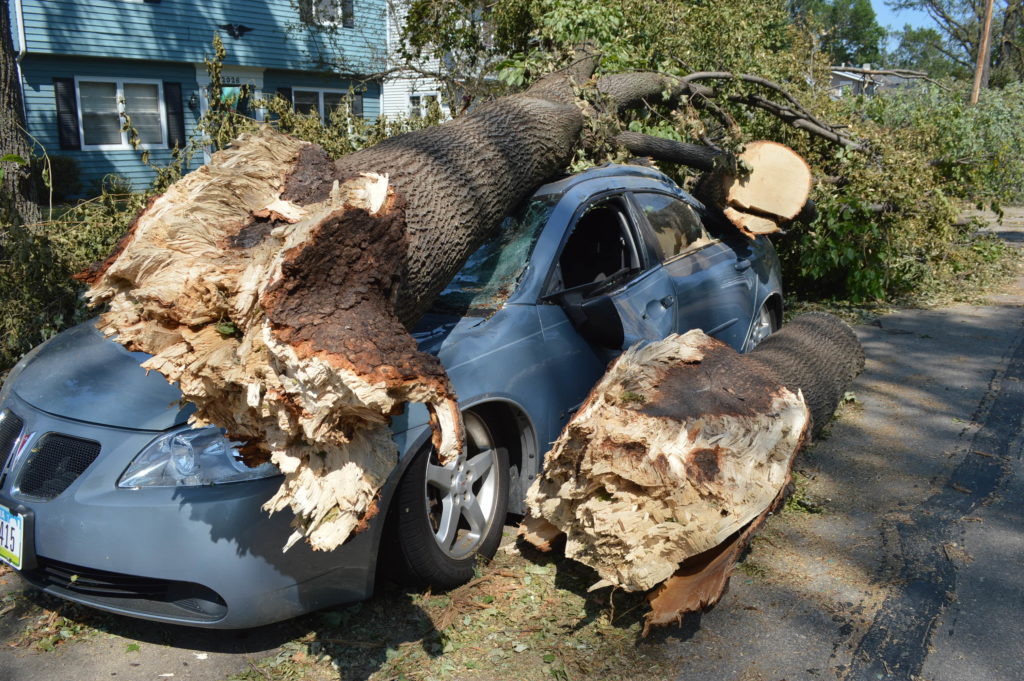
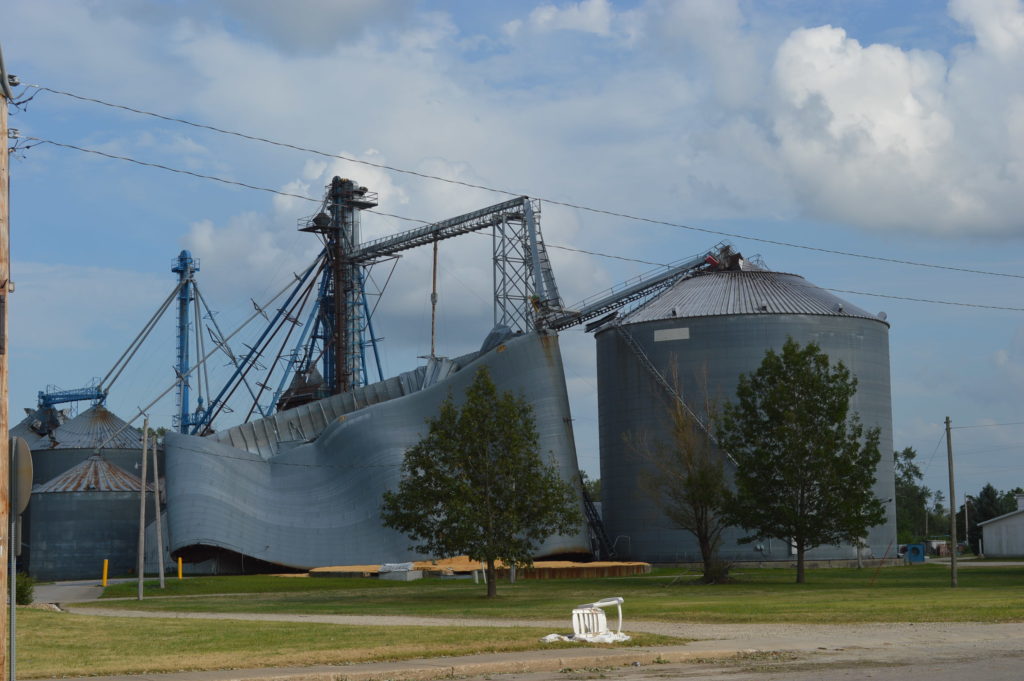
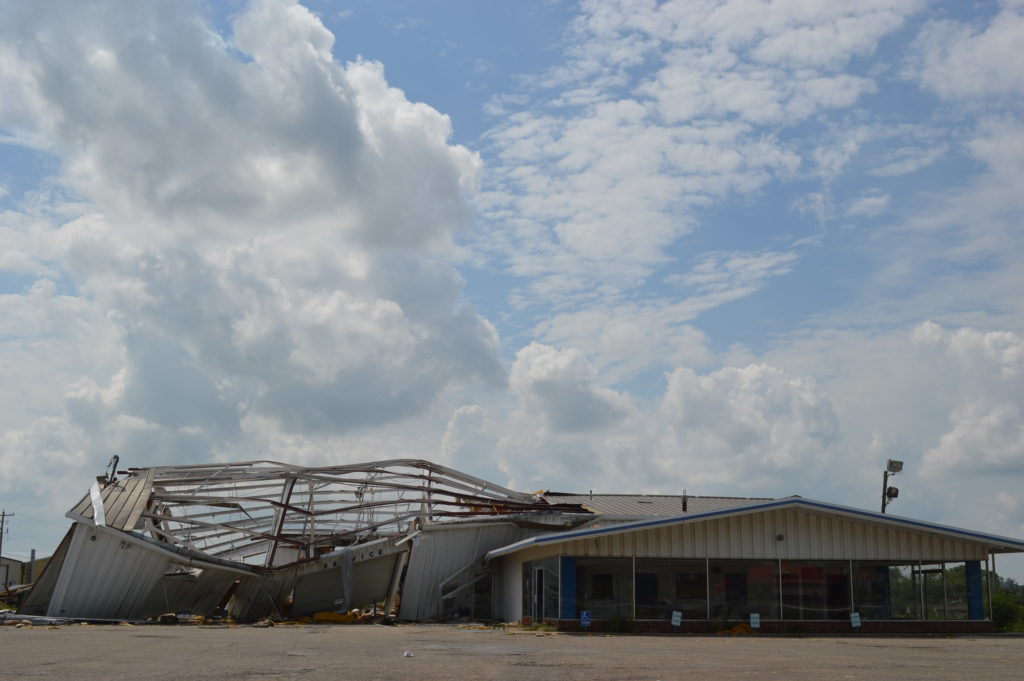
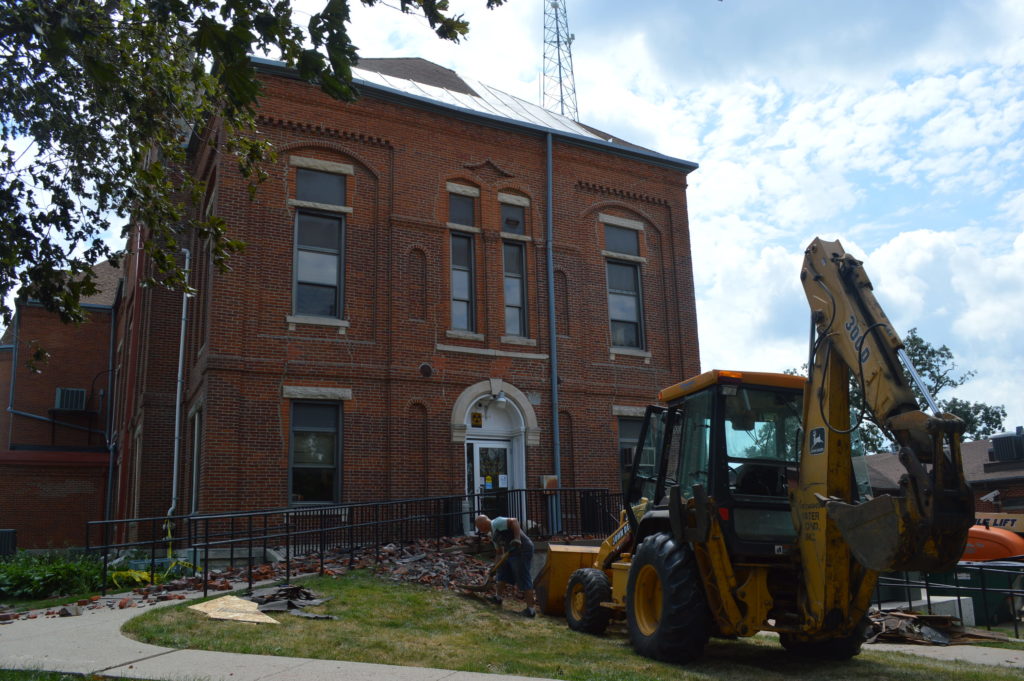
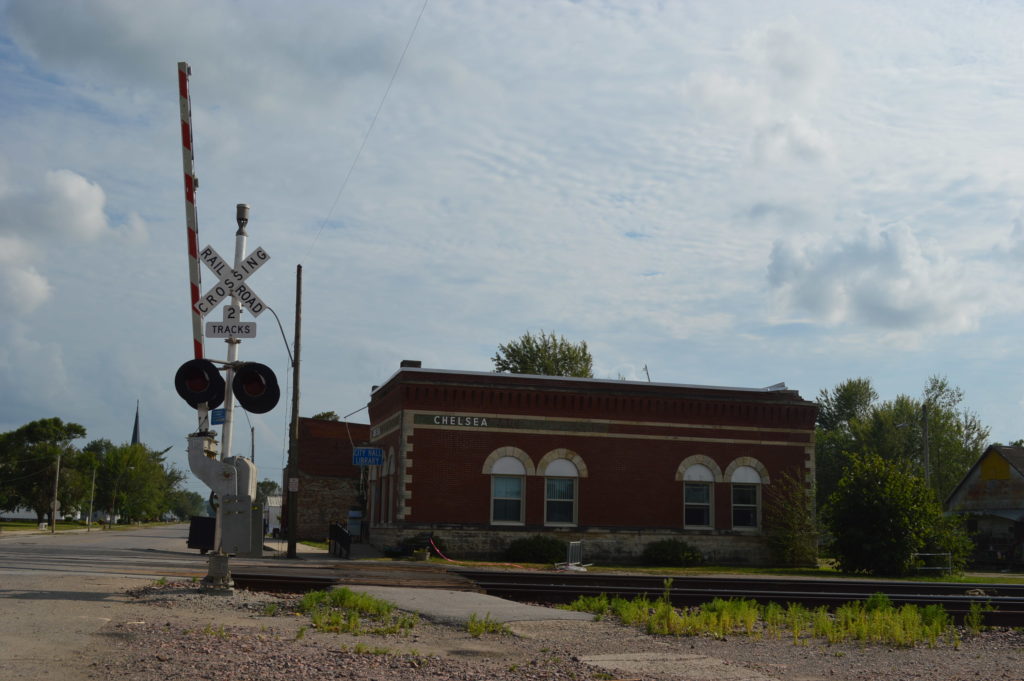
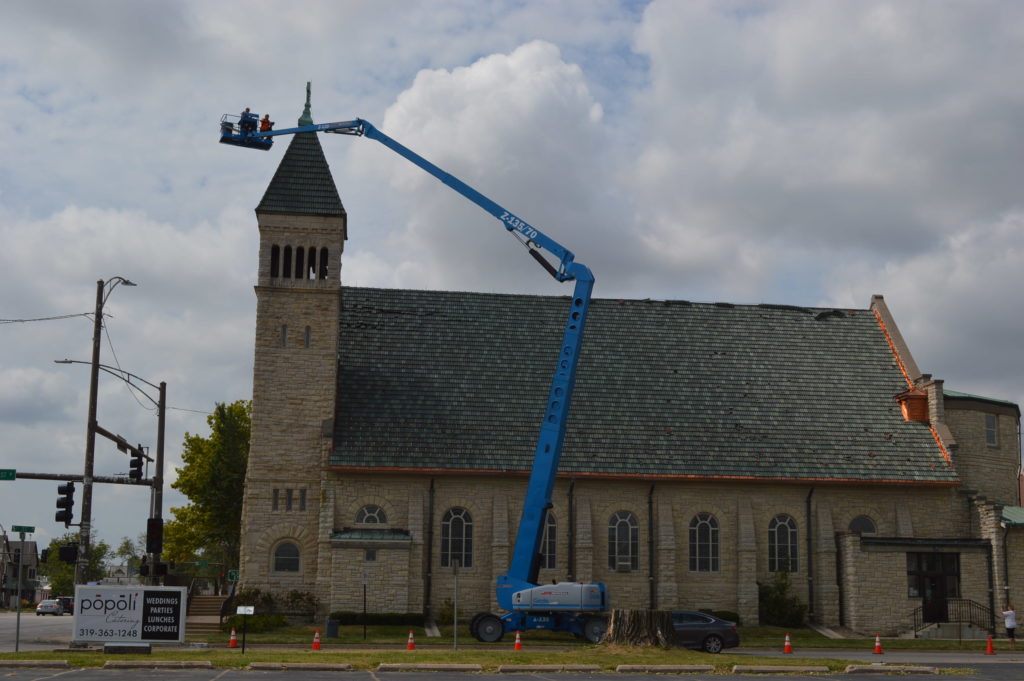
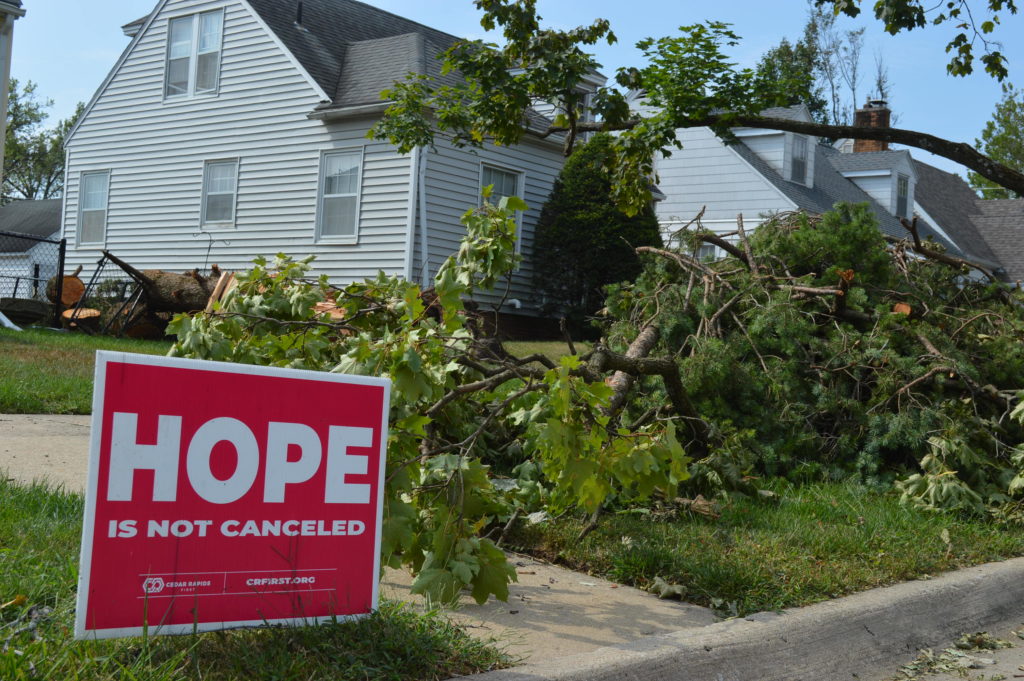
Thanks, Cindy, for your photos. Those who consider themselves Iowans even after leaving the state, appreciate all you do.
Thank you so much, Margery! We have a long road to recovery, once again.
[…] See photos of the aftermath of the derecho […]